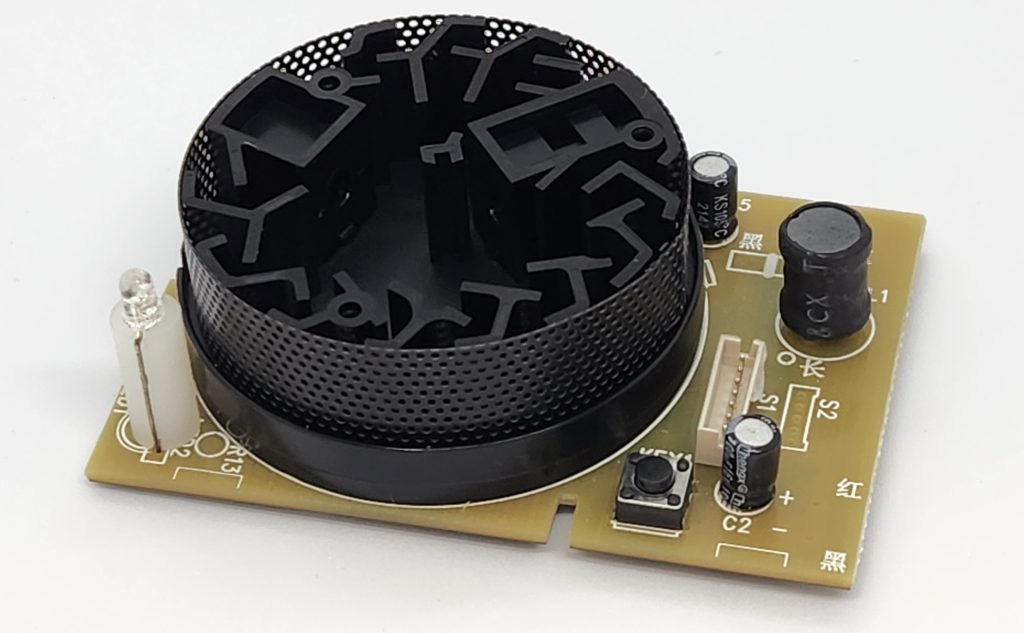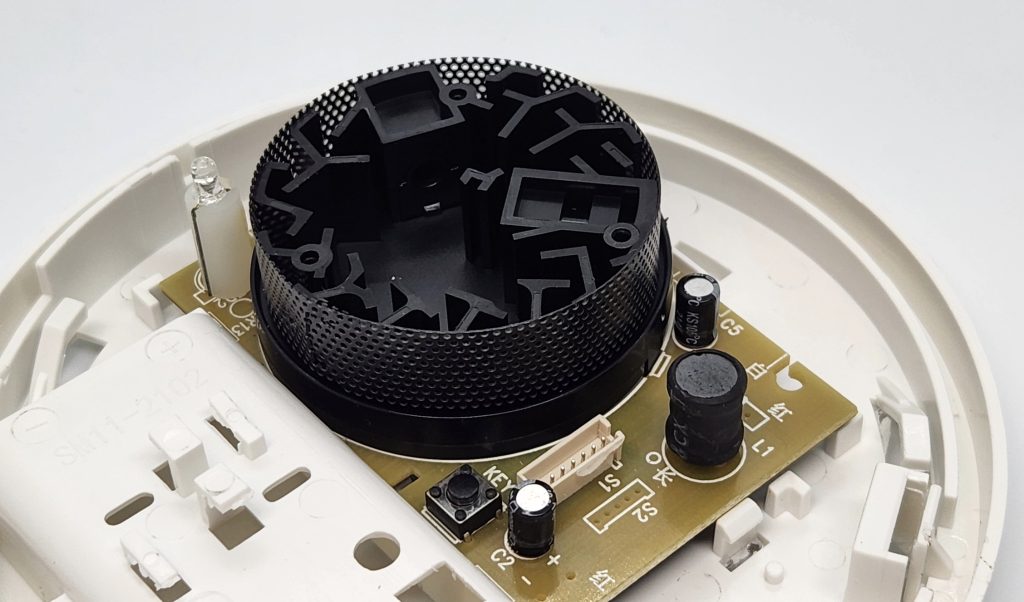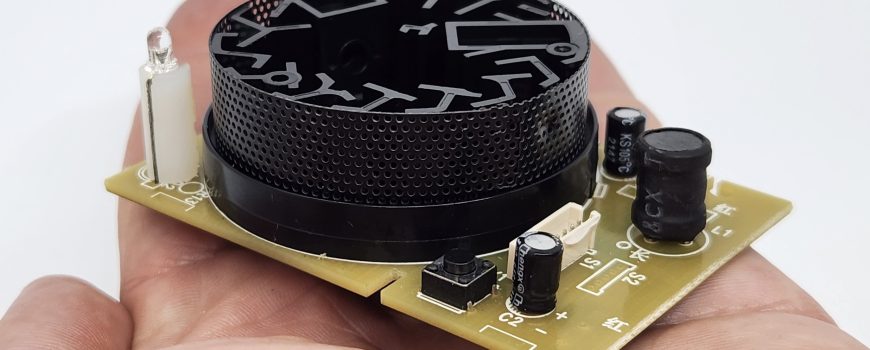How Photoelectric Smoke Sensors Work in Smoke Alarms
Smoke alarms are essential devices that provide early warning of fire hazards, allowing occupants to evacuate safely. Among the different types of smoke alarms available, those equipped with photoelectric smoke sensors are widely recognized for their effectiveness in detecting smouldering fires. These fires, which produce thick smoke before flames appear, are common in home environments and can be especially dangerous when people are asleep.
But how exactly do photoelectric smoke sensors work, and why are they preferred over other types of smoke detection technology? In this article, we’ll take a closer look at the inner workings of a photoelectric smoke sensor, its components, and why it plays a vital role in home fire safety.

What Are Photoelectric Smoke Sensors?
Photoelectric smoke sensors are the core component inside a photoelectric smoke alarm, responsible for detecting smoke particles in the air. It operates on a simple but highly effective principle: using light to detect smoke.
Unlike ionization smoke alarms, which rely on a small radioactive source to detect fire, photoelectric smoke sensors use a light beam and a light-sensitive sensor to identify smoke particles. This makes them particularly responsive to smouldering fires, such as those caused by electrical faults, overheated appliances, or cigarettes left unattended.
The Photoelectric Smoke Sensing Chamber: How It Works
Inside a photoelectric smoke alarm is a specially designed photoelectric sensing chamber. This chamber is where smoke detection occurs, using a combination of an LED light source and a light-sensitive sensor.
Here’s how the process works:
1. The Light Beam Is Emitted
At the heart of all photoelectric smoke sensors is a small LED (light-emitting diode) that continuously emits a beam of light. This light beam is carefully positioned inside the sensing chamber so that, under normal conditions, it does not directly hit the light-sensitive sensor.
2. Smoke Enters the Chamber
When smoke enters the photoelectric sensing chamber, it disrupts the normal conditions inside the alarm. Smoke particles scatter the LED light beam, causing it to reflect in different directions.
3. The Sensor Detects Scattered Light
As the smoke particles scatter the LED light, some of that light is redirected toward the light-sensitive sensor. Once enough smoke has entered the chamber, the redirected light reaches the sensor, triggering the smoke alarm.
4. Alarm Activation
When the sensor detects a significant amount of scattered light, it sends an electronic signal to the smoke alarm’s internal circuitry. This signal activates the alarm, producing a loud, high-pitched sound to alert occupants to the presence of smoke.
This method of smoke detection is highly effective for identifying slow-burning, smouldering fires that may not immediately produce flash flames but generate large amounts of smoke.
Why Are Photoelectric Smoke Sensors Effective?
Photoelectric smoke sensors are considered highly reliable for detecting the early stages of home fires. Here’s why:
1. Fast Response to Smouldering Fires
Many house fires begin as slow, smouldering events that generate a lot of smoke before bursting into flames. Photoelectric smoke sensors can detect this type of fire early, providing critical time to react.
2. Fewer False Alarms
Compared to ionization smoke alarms, photoelectric smoke sensors are less likely to trigger false alarms from everyday activities like cooking or steam from a hot shower. This reduces the likelihood of people disabling their alarms due to frequent nuisance alarms.
3. No Radioactive Material
Unlike ionization smoke alarms, which use a small amount of radioactive material to detect smoke, photoelectric smoke alarms operate using safe LED light technology. This makes them an environmentally friendly and non-hazardous choice.
4. Consistent Performance Over Time
The photoelectric sensing chamber inside a smoke alarm is designed to maintain accuracy and sensitivity over the life of the alarm. With regular basic maintenance, such as occasional cleaning to remove dust build up, these alarms provide long-lasting, reliable fire detection.

Common Uses for Photoelectric Smoke Alarms
Because of their superior ability to detect smouldering fires, photoelectric smoke alarms are recommended for residential homes, apartments, and workplaces.
Here are some key areas where photoelectric smoke alarms could be installed:
- Bedrooms & Hallways – To alert sleeping occupants in the event of a fire.
- Living Areas – Near electrical appliances, such as TVs and heaters, that could overheat.
- Near lithium battery re-charging stations – To provide early warning of overheating and combustion from faulty lithium batteries – an increasingly common occurrence.
- Home offices – Where electrical faults can pose fire risks.
In many regions, including Queensland, Australia, building regulations require interconnected photoelectric smoke alarms to be installed in all bedrooms and on every level of a home to comply with updated fire safety laws.
Maintaining Your Photoelectric Smoke Sensors
To ensure photoelectric smoke sensors function properly, regular maintenance is essential. Here are some key maintenance tips:
1. Test Your Smoke Alarm Monthly
Press the test button on your smoke alarm once a month to ensure the alarm sounds correctly.
2. Keep the Sensing Chamber Clean
Dust and debris can accumulate inside the photoelectric sensing chamber, reducing the sensor’s effectiveness. Use a vacuum cleaner or a soft brush to clean around the vents of the alarm.
3. Replace the Alarm Every 10 Years
Over time, photoelectric smoke sensors may become less sensitive due to natural aging. Fire safety regulations recommend replacing smoke alarms every 10 years.
4. Check the Battery Regularly
Many modern photoelectric smoke alarms come with a sealed 10-year lithium battery that never needs replacing. However, if your alarm uses a replaceable battery, check it regularly and replace it as needed.
Conclusion
Photoelectric smoke sensors are a highly effective and reliable method for detecting smoke in home and workplace environments. Their ability to quickly identify smouldering fires, combined with fewer false alarms and an environmentally friendly design, makes them the preferred choice for fire safety.
By installing photoelectric smoke alarms in key areas of your home and maintaining them properly, you can significantly enhance your fire protection and give yourself the best chance of early warning in an emergency.
If you’re looking for a high-quality photoelectric smoke alarm with a 10-year battery, wireless interconnectivity, and compliance with Australian Standards, consider ZEN Smoke Alarms. Stay safe, stay prepared, and ensure your home is equipped with the best smoke detection technology available.

Want to know more? Watch our ZEN Smoke Alarm YouTube channel or call us on 0478 596 402 today
We love talking smoke alarms!
ZEN Photoelectric Smoke Alarms
New Farm, QLD, 4005

